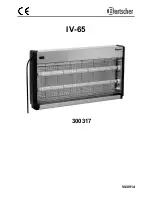
Section 2
Environmental aspects
2.1
Sustainable development
Sustainability has been taken into account from the beginning of the product design
including the pro-environmental manufacturing process, long life time, operation
reliability and disposing of the protection relay.
The choice of materials and suppliers has been made according to the EU RoHS
directive 2011/65/EU and the amended EU directive 2015/863/EU. These
directives limit the use of hazardous substances.
Table 1:
Maximum concentration values by weight per homogeneous material
Substance
Proposed maximum
concentration
In %
Lead - Pb
<1000 ppm (RoHS3)
0.001
Mercury - Hg
<1000 ppm (RoHS3)
0.001
Cadmium - Cd
<100 ppm (RoHS3)
0.0001
Hexavalent Chromium Cr (VI)
<1000 ppm (RoHS3)
0.001
Polybrominated biphenyls -
PBB
<1000 ppm (RoHS3)
0.001
Polybrominated diphenyl ether
- PBDE
<1000 ppm (RoHS3)
0.001
Operational reliability and long life time have been ensured with extensive testing
during the design and manufacturing processes. Moreover, long life time is
supported by maintenance and repair services as well as by the availability of spare
parts.
Design and manufacturing have been done under a certified environmental system.
The effectiveness of the environmental system is constantly evaluated by an
external auditing body. We follow environmental rules and regulations
systematically to evaluate their effect on our products and processes.
2.2
Disposal of a protection relay
Definitions and regulations of hazardous materials are country-specific and change
when the knowledge of materials increases. The materials used in this product are
typical for electric and electronic devices.
2NGA000821 A
Section 2
Environmental aspects
REX610
7
Installation Manual
















































